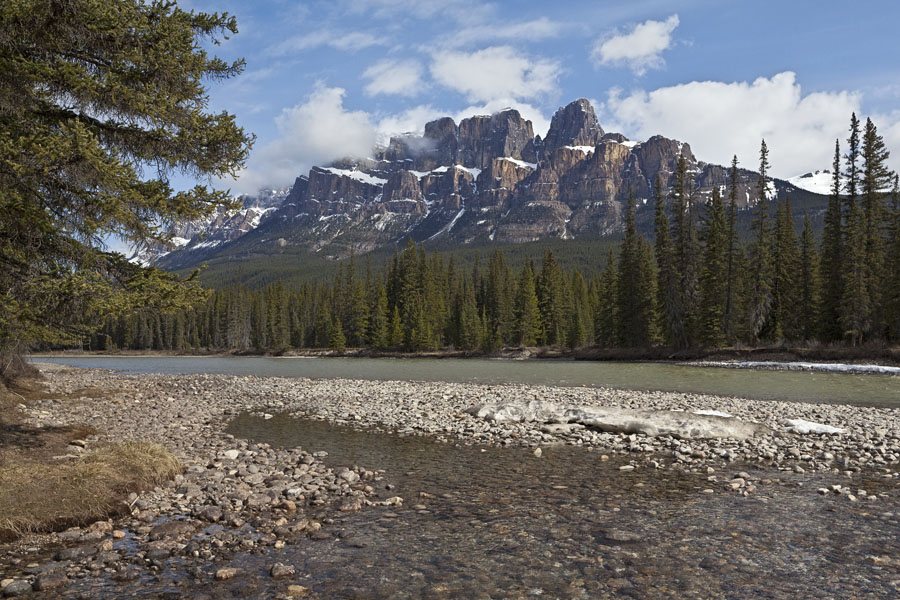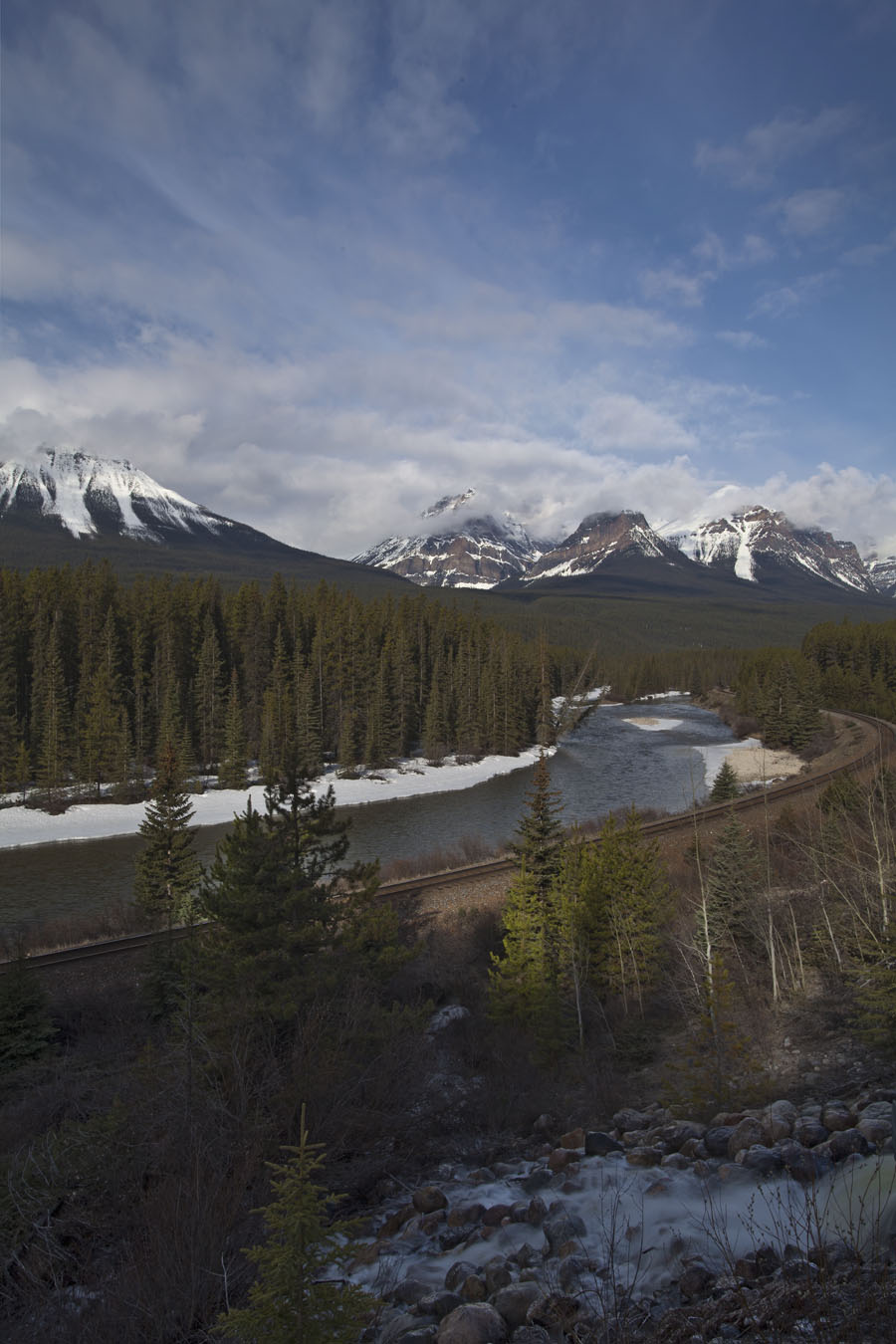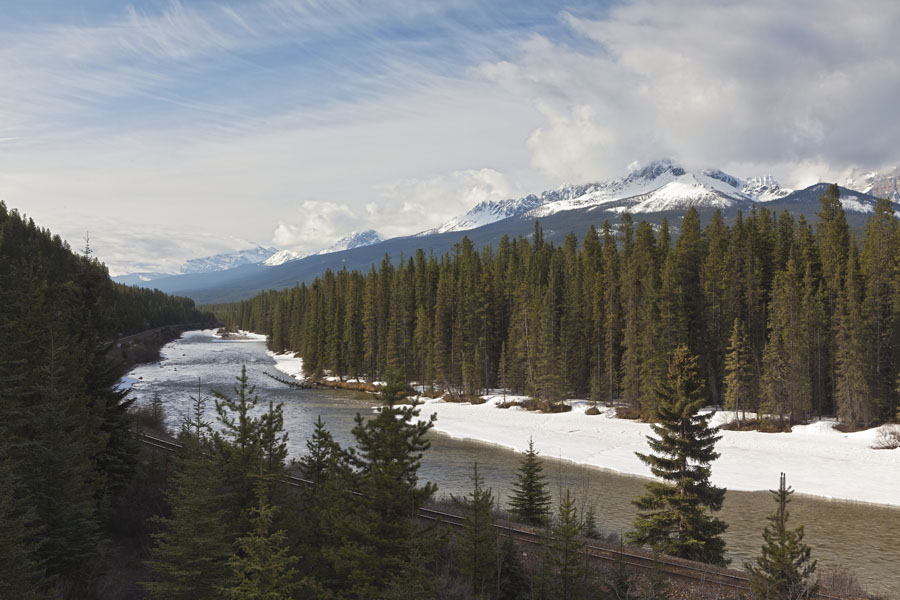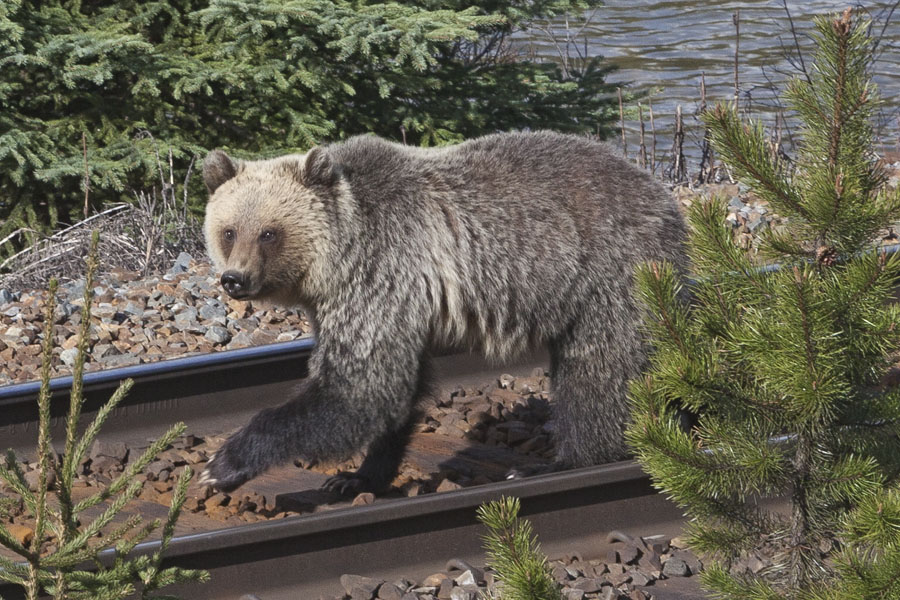Yesterday, Bob Bear and I went out to Banff National Park in search of some mountain scenes. We re-visited a favourite locale, the Bow Valley Parkway where we made stops at Morant’s Curve and Castle Junction. If you wonder why I return frequently to many of these areas, it is because I have learned that no two days are ever the same. I can photograph the same subject time and time again but the pictures are never quite the same. The weather, time of year and most particularly the light conditions play a big role in providing ever interesting photo opportunities. And on some occasions, like yesterday you can have a pleasant surprise thrown in.
I begin today’s blog with one of my favourite scenes, Castle Mountain. The picture was taken at about 10:15 am, the last of our stops before we headed for home. We descended to the river bank where we took a variety of shots from different vantage points. This is my preferred choice. We had checked this site earlier in the morning and chose to continue on because of the sun’s location in the sky and the less favourable light. By the time we returned, the sun had moved to a position where it was shining almost directly on the mountain’s face. The direction of the sunlight had changed from a bearing of 76 deg to 107.5 deg in the course of almost two hours,with a dramatic change to the appearance of the mountain. The cloud had diminished a little leaving the few wisps you see clinging to the mountain’s peaks. This photo was taken with a 24mm tilt-shift lens, using an aperture of f/8.0 and an ISO setting of 160. It was all over in 1/500 second.

We had good conditions at Morant’s Curve as well. Arriving there shortly after 8:30 am, the sunlight was coming from almost due east, shining directly on the mountains up river from where we were positioned. This first picture includes the railroad bend, the Bow River and the peaks surrounding Lake Louise. We were favoured with a variety of beautiful clouds which always add an element of interest to the mountains. I chose to tackle the foreground shadows in order to include the outflow of a small creek emptying into the river. This picture was taken using a EF17-40mm f/4L USM wide angle lens (f/16.0, ISO 50, 1/5 sec).

I turned my camera almost due south for this next photograph, featuring Panorama Ridge. You can’t see all of it due to the clouds but the light is very good illuminating that side of the river. The opposite bank remains in shadow,with the sun not yet high enough in the sky to get over the Sawback Range on the left. This shot was taken with a standard lens, EF24-70mm f/2.8L USM and a 2-stop neutral density gradient filter (f/16.0. ISO 50, 1/6 sec).

As I was re-packing my bag to move on, I noticed a little excitement down where Bob was positioned. A tour bus had stopped there a few minutes earlier and their sharp-eyed guide had spotted a bear further down the tracks. A quick change of lens to a telephoto and we were ready to go. The bear remained at a distance until the tour bus left and shortly after he proceeded in our direction. Our patience in waiting was rewarded and he soon passed just below us. Following is my favourite of the pictures I took. He’s very aware of our presence but not feeling threatened, he continued on his way without giving us much thought.
We had a great day shooting landscapes. But a great landscape is always surpassed by the excitement of encountering a grizzly in the wild. We don’t see them often, so putting it mildly we were elated by the surprise.

The grizzly bear is any North American subspecies of the brown bear, including the mainland grizzly, the Kodiak bear, the peninsular grizzly and the recently extinct California grizzly and Mexican grizzly bear. Specialists sometimes call the grizzly the North American brown bear because the grizzly and the brown bear are one species on two continents. In some places, the grizzly is nicknamed the silvertip bear for the silvery, grizzled sheen in its fur. Most adult female grizzlies weigh 130–200 kg (290–440 lb), while adult males weigh on average 180–360 kg (400–790 lb). Although variable from blond to nearly black, grizzly bear fur is typically brown in color with white tips. A pronounced hump appears on their shoulders; the hump is a good way to distinguish a black bear from a grizzly bear, as black bears do not have this hump. (Courtesy Wikipedia)

Nice!! How far away was he/she ?
Fabulous pic of Grizzly!!